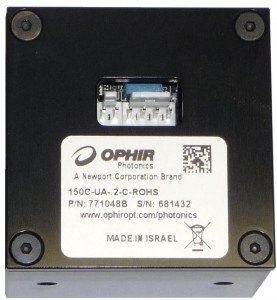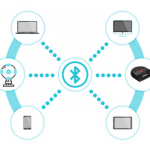I have a confession.
I often freeze up when I go to a salad bar. Do I really know which of the 30-odd vegetables and other ingredients really go best together? I’m sometimes tempted to just ask the chef to put something together for me. “I’ll start you off with tomatoes, but you’ve got to do the rest. Come on, you know what goes well with that. Don’t hold out on me!”
Sometimes, searching for the right OEM laser measurement product can be a lot like this. To make matters worse, it’s not always obvious which “ingredients” are available. In fact, coming up with an OEM solution would be more like going into the restaurant and saying: “I want something low-fat, yet filling, and it must be adaptable to a bowl or plate. Do you have any solutions for me?” The waiter would probably think you have a screw loose. Yet at Ophir, we welcome requests just like these.
Ophir’s philosophy is that the customer knows what he wants to measure better than we do, so we try not to limit his choices. At the same time, we know that the OEM process by its nature can be confusing and increasing its options may complicate things even further. So, I hope I can clarify some things about Ophir’s line of OEM solutions in the next few lines.
One thing you should keep in mind when looking through the Standard OEM spec sheets is that each sensor found there is a basic prototype of a whole family of sensors. Even though it’s called “standard,” that shouldn’t be taken as indication that these sensors are complete as is. They are building blocks that are commonly used for requested OEM solutions.
The advantage of starting with a standard OEM part is the final product will usually be ready quicker. However, you should certainly not hesitate to call even if you don’t see a standard OEM sensor that fits your needs. Ophir can almost always find something that will work for your specific application. And if we can’t, then we’ll try something new. After all, isn’t that the whole point of an OEM solution?
I/O Options
Another thing to consider is if and how you’d like to communicate between the sensor and your host device. Each sensor core (whether standard or otherwise) can use any combination of analog or digital input and output.
Let’s examine output first since it’s always necessary. Analog output is simply the raw or amplified analog signal. Alternatively, it can be converted to digital and used at an RS232 port.
You can have digital input (also through RS232) if you want to use different scales, wavelengths, etc. A full list of commands that can be sent to the sensor – like requesting power or energy, setting the wavelength, and many more – are sent along with the spec sheet and product. Analog input is not really relevant, but we do have a solution for a non-digital OEM product which needs to operate at two different wavelengths. The difficulty is telling the sensor which wavelength to use without digital lines of communication. The solution is to set a pin high or low to indicate to the sensor which calibration sensitivity to use (which is wavelength-dependent).
It should be noted that we also offer digital OEM solutions that use a USB connection instead of RS232. It is not fundamentally different, though, and the above discussion can be applied to these products as well.
The bottom line is that at Ophir, we believe the customer knows best. We do our best to have numerous options and keep our minds open to new possibilities. Don’t worry if this seems complicated; we’re here for you. Unlike the salad bar manager, we would be happy to walk you through every step of the process.
Did you find this helpful? Why not share it with a friend?
You might also like to read: Heat Sinking Guidelines














Good Day,
I am trying to find a sensor to measure our Q-Switch Nd:YAG laser. It can be operated at 400mj with single pulse. 1-5Hz Frequency and input power of 780w. This is a laser used in aesthetics and tattoo removal. If you could please point me in the right direction it would be appreciated. We currently have a NOVA but it is out of cal. so may also be interested in software to check the readings on our PC or other device.
Thank You
Joseph, thanks for the question.
There are a couple of factors that will help determine which sensor is right for you:
1. What’s the diameter (spot size) that you will be measuring?
2. Do you want to measure average power or energy per pulse?
3. What is you laser pulse width?
I made a few assumptions and it looks like you will need either:
50A-PF-DIF-18 (power and single-shot energy)
PE25BF-DIF-C (power and energy of every pulse)
But if you clarify the questions above we can be more sure that you’re looking at the best sensor for your needs…
If you want to replace your Nova meter with a PC, you’ll need a PC-interface to connect between the sensor and PC. The Juno interface is the smallest and probably what you need, it connects via USB. Software can be downloaded for free, here.
All the best,
Effy